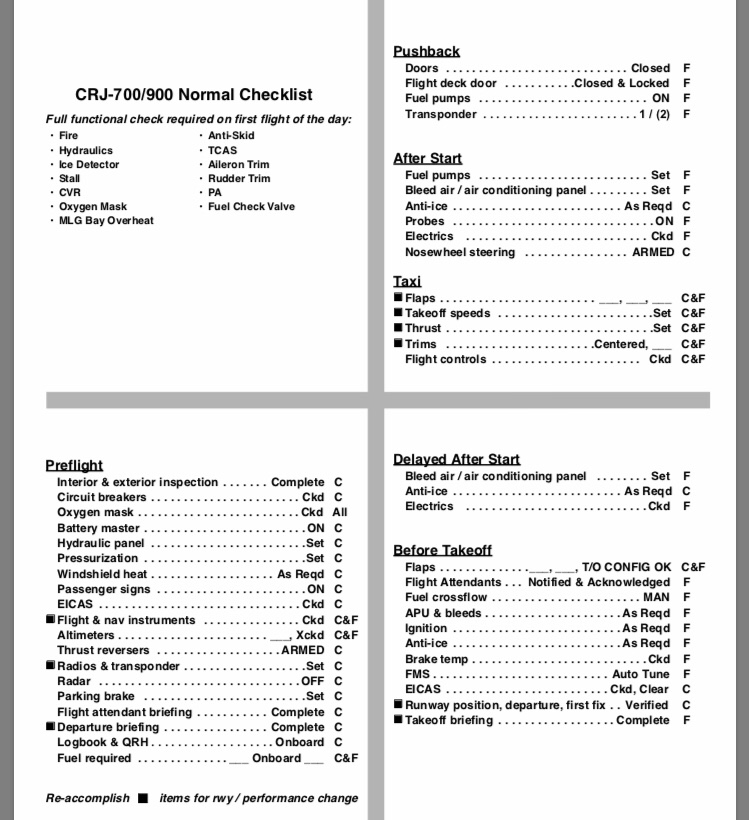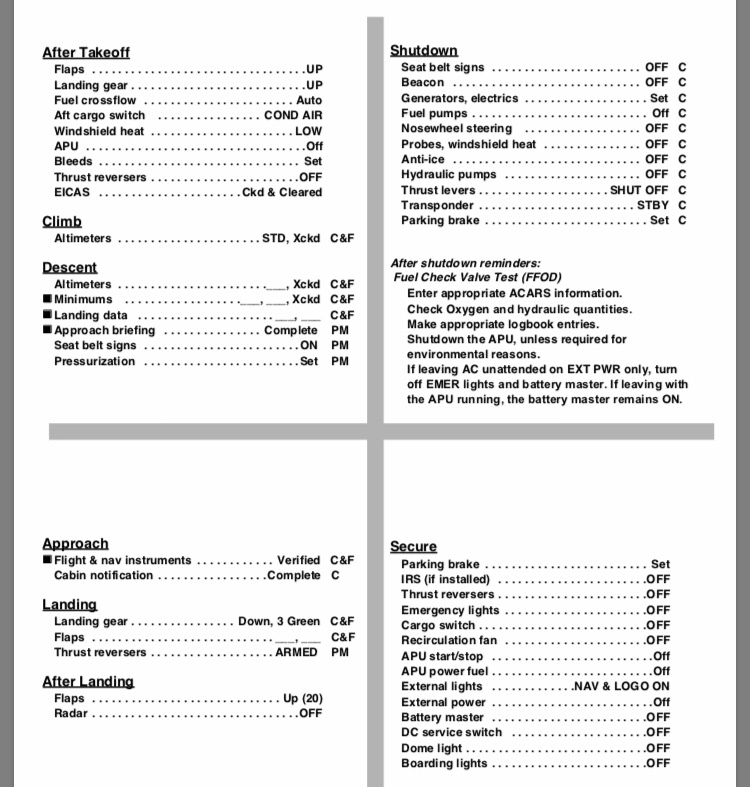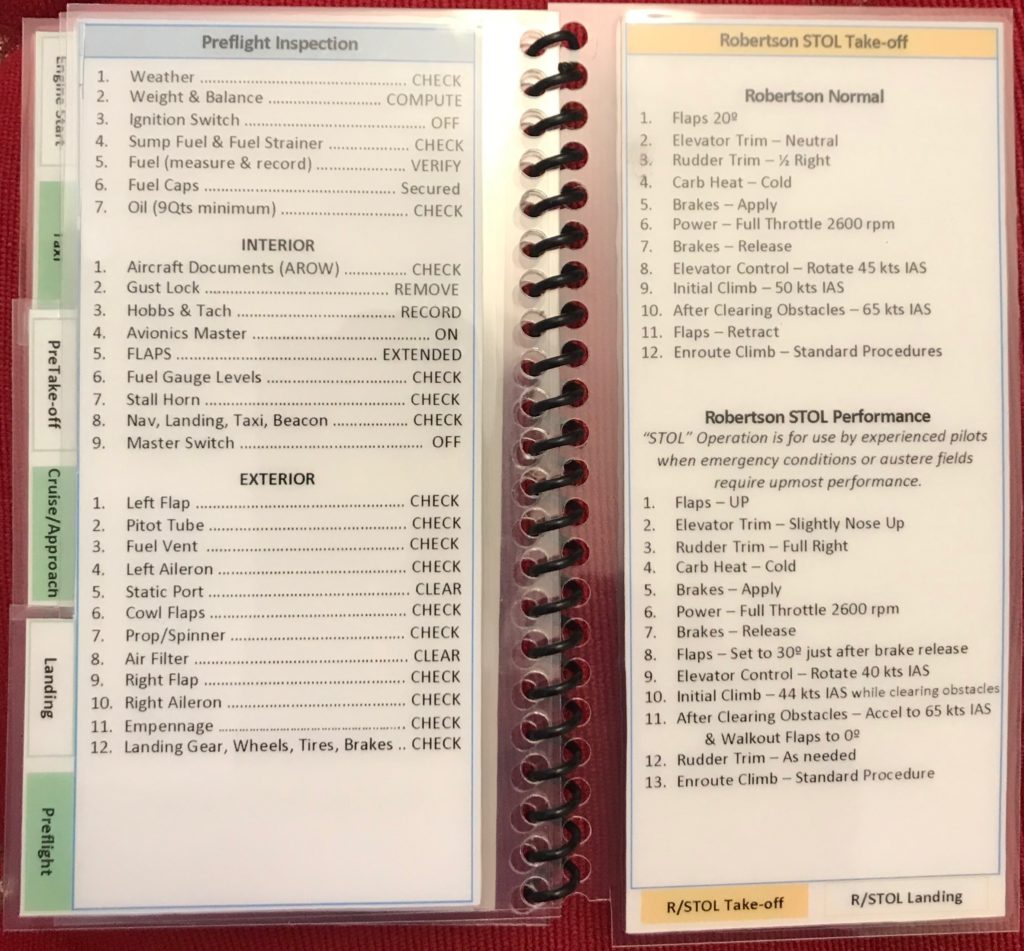cowman
Final Approach
I've wanted to do this for a while and just never got around to it. Took my checklist home with me and now I'm going through and re-arranging some items, pruning some things, and adding some missing items. Since this will be only for my use in my plane I feel like I can omit some parts that IMO are memory items, would like to get some general opinions on that.
One thing I've noticed on this(it's a 2-sided laminated card) is 1/3 of the page is dedicated to the engine start sequence. I have to confess, and perhaps this is a huge sin, I've always skipped right to the pre-taxi part of the checklist because I just don't need the steps to start the engine listed out like that. I own my plane and don't fly any others, and the startup procedure isn't exactly complicated so I don't feel I need it. Is that reckless? I'm not really feeling like it is. I'm tempted to re-write the checklist to fit the way I use it and just omit that entire section or simplify it to "start engine".
I think a "during taxi" section or a reminder to check the DG and turn coordinator operation should be added in.
Most of the other stuff I'm basically OK with as-is.... I'm a minimalist for having checklist items post takeoff. the above 500' items- set power/flaps up/fuel pump off are good. most of the other stuff until the before landing checks to me should just be considered "flying the airplane". I mean, if you are post-solo or have your PPL and you need to be told to trim.....
Might replace most of that with an approach(as in IFR) checklist, a quick "approaching field" check for VFR, and GUMPS... although GUMPS is more of a memory item isn't it?
Anyway, my philosophy here is that everything on that list should be something important I need to always do and could potentially forget. I'm not going to forget to do things like turn the master on or engage the starter.... Thoughts?
One thing I've noticed on this(it's a 2-sided laminated card) is 1/3 of the page is dedicated to the engine start sequence. I have to confess, and perhaps this is a huge sin, I've always skipped right to the pre-taxi part of the checklist because I just don't need the steps to start the engine listed out like that. I own my plane and don't fly any others, and the startup procedure isn't exactly complicated so I don't feel I need it. Is that reckless? I'm not really feeling like it is. I'm tempted to re-write the checklist to fit the way I use it and just omit that entire section or simplify it to "start engine".
I think a "during taxi" section or a reminder to check the DG and turn coordinator operation should be added in.
Most of the other stuff I'm basically OK with as-is.... I'm a minimalist for having checklist items post takeoff. the above 500' items- set power/flaps up/fuel pump off are good. most of the other stuff until the before landing checks to me should just be considered "flying the airplane". I mean, if you are post-solo or have your PPL and you need to be told to trim.....
Might replace most of that with an approach(as in IFR) checklist, a quick "approaching field" check for VFR, and GUMPS... although GUMPS is more of a memory item isn't it?
Anyway, my philosophy here is that everything on that list should be something important I need to always do and could potentially forget. I'm not going to forget to do things like turn the master on or engage the starter.... Thoughts?



